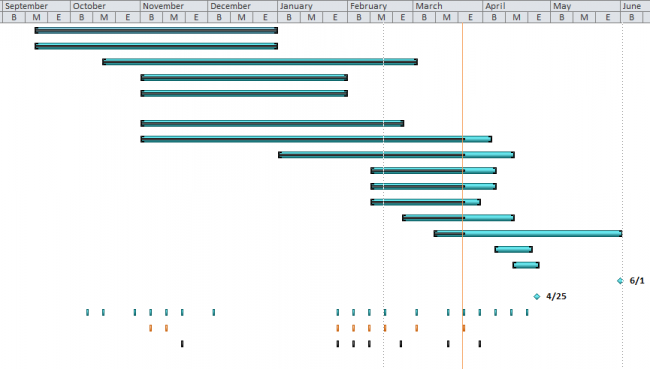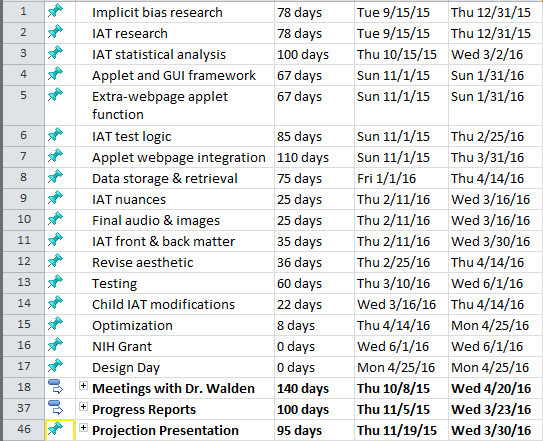Background:
Our team selected a project dealing with stuttering under the advisement of Dr. Tedra Walden of the Vanderbilt Departments of Psychology and Hearing and Speech Sciences and the Vanderbilt Kennedy Center. In this project, we aim (1) to develop a quantitative means of distinguishing between the patterns of stuttering and non-stuttering speech, and (2) to build a research tool to assess biases against stuttering.
As of our last progress report, we were primarily focusing our efforts to complete applet webpage integration.
Achievements:
Since the last progress report, we have completed four major tasks integral to our final design. First, we have spent a great deal of time on preparing our Design Day presentation. While most of our previous presentations have been focused on updating Dr. Walker on our progress, the current presentation is designed to function almost precisely as it will during the final presentation on Design Day. Instead of explaining how the Implicit Association Task (IAT) works, we have transitioned to having the user actually take an IAT during the presentation. We anticipate that this will take approximately three minutes, roughly 1/4th of our presentation time. Second, we have made minor steps in getting the applet on a server for the widespread collection of data (more on this in Challenges encountered). Third, the IAT nuances are nearly complete, and the IAT front and back matter is also almost complete. Fourth, the aesthetic has seen additional improvements.
Challenges encountered:
Since the last progress report, significant challenges have come to our attention. First, applet webpage is continuing to be a major obstacle. Our original contact has shown increasing resistance to hosting our website due to reasons beyond our control. We have reached out to Vanderbilt IT (specifically Web Department) in order to find a place to host the program. We are also looking into modifications to allow the program to be run from our ‘my.vanderbilt.edu’ site. Second, integrating the front and back matter into the IAT logic was more difficult than originally projected. However, due to our project’s Technology Lead insistence on producing a high-quality product, we are very close to having the capability to collect both demographic information and post-test information from IAT users.
Future work:
The next steps of the project can be seen in our project timeline (GANTT chart) below. In the next two weeks, we anticipate making major advancements in applet webpage integration, testing, Child IAT modifications, and optimization. These will involve a significant time increase from our current workload; however, this is necessary for timely completion of the project, and we are willing to do this in order to meet the deadlines for the NIH grant set by our adviser.
Project timeline:
Bottom line:
We strongly anticipate that we will meet the objectives in the proposed schedule and budget. We are slightly behind schedule in applet webpage integration, but we believe this challenge will be overcome in the near future.


